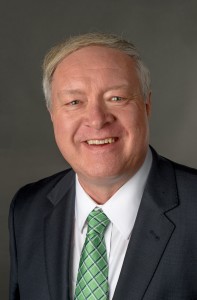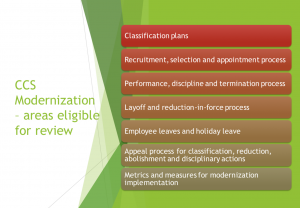News
Ohio University Begins Layoffs With 140 Union Workers, Furloughs Likely
By: Allison Hunter
Posted on:
ATHENS, Ohio (WOUB) — Days after Ohio University’s president sent Tuesday’s Persevering In Uncertain Times email, certain faculty, staff, and students came to understand the gravity of his message.
By Friday, 140 American Federation of State, County and Municipal Employees (AFSCME) and at least three professors from the College of Arts and Sciences were told their jobs would soon be eliminated.
According to several social media posts from upset students, colleagues, and alumni, releasing Dr. Daniel Moake of African American Studies, and Dr. Patty Stokes and Dr. Kimberly Little of Women’s, Gender and Sexuality Studies has sparked concern that the university is trying to shutter those programs.
Mayday Massacre at Ohio University. Non-tenured faculty being cut (including teaching faculty and probationary tenure track faculty). Some departments cut in half, others may not survive at all.
— Susan Burgess (@susanrburgess) May 1, 2020
Stokes told The Athens News that her and Little’s departure “will leave the department without a single full-time faculty member devoted to solely teaching WGS classes.”
OU spokesperson Carly Leatherwood maintains while there will be “the possible restructuring of colleges and departments,” many decisions are made at the college or department level and the university isn’t targeting any one in particular.
“At this time, there are no specific groups of employees that will be eliminated across the board,” Leatherwood said.
But some may feel it more than others
Friday afternoon, the university released a statement affirming that “In addition to the elimination of 140 filled positions, vacant positions equivalent to 32.25 full time employees and 17 positions vacated through the ERIP [Early Retirement Incentive Program] program will remain unfilled.”
AFSCME members work as custodial staff, building maintenance workers and groundskeepers, with the majority earning $30,000 – $50,000 annually. According to the release, this move is expected to save the university $11,317,926.
Before the pandemic, Ohio University had slowed hiring, offered early retirement programs and voluntary separation agreements, cut the budgets of academic and non-academic units and warned of personnel reductions in an attempt to balance a $35 million projected shortfall. The economic impact of the coronavirus disruption has only made matters worse.
Friday’s release announcing the first round of “significant personnel reduction” referenced these realities.
“Ohio University recognizes and regrets the difficult impact this will have on our valued employees, their families, and our community at large,” the statement read.
The “F” word
In Tuesday’s email on the budgetary concerns, Nellis said he and Executive Vice President and Provost Elizabeth Sayrs have inserted themselves in the losses.

“Recognizing the sacrifices ahead, Provost Sayrs and I have each agreed to voluntarily reduce our University base salaries by 15 percent (equivalent of a 39-day furlough) for FY21.” Nellis makes $489,357 annually, Sayrs $378,750.
Combined, their voluntary reductions amount to $130,216.05.
When asked whether this was a nod toward what was to come for other employees, Leatherwood acknowledged the university is in the process of establishing an interim furlough policy,
“We expect that a furlough of some type will be necessary given the impacts of the pandemic, and we have begun discussions about how that might be implemented but no decisions have been finalized,” she told WOUB.
The current furlough policy defines a furlough as an unpaid leave of absence from work for a specified period of time where employees are not permitted to work or use accrued paid leave. Its stated purpose is to “allow the university to balance its budget.”
There will be more
Policy changes are also currently being reviewed for the university’s non-union classified civil service employees. Classified workers, those who typically work in administrative and other support positions,

were informed of the proposed changes via an email invitation to an open forum.
The email, sent by Human Resources, , cited labor market changes as the driver for new recruitment and employment measures. “…it is time for Ohio University to address unnecessarily antiquated regulations regarding our classified civil service,” the message stated.
Neither the email nor the proposed changes mentioned the pandemic as an impetus for the “classified civil service modernization.” The policy changes are expected to be in place by May 29, and require four weeks of review by the employees who will be affected.
They include:
- “Proposing a reduction of hours worked per week or number of months worked per year that does not result in a change in current benefits eligibility… [and] will not be considered a reduction in force, layoff or job abolishment and will not entitle [the] employee to exercise displacement rights.”
- Proposing provisional employee status be extended from 120 days to 180 days.
- “Proposing classified civil service employees’ pay may be reduced to achieve budgetary savings, permit the institution to implement a furlough.”
Schools throughout the state are making similar decisions. The University of Dayton recently announced it will be furloughing or laying off more than 500 employees this summer due to the effects of the pandemic. And Kent State University has made it clear that the next budget year will include “layoffs and job abolishments,” along with pay cuts for staff.
As for the future of Ohio University’s employees, Leatherwood says, “As reduction plans are finalized and impacted employees are formally notified, we will communicate with local media and update our campus community.”
Ohio University holds WOUB Public Media’s license to operate.

